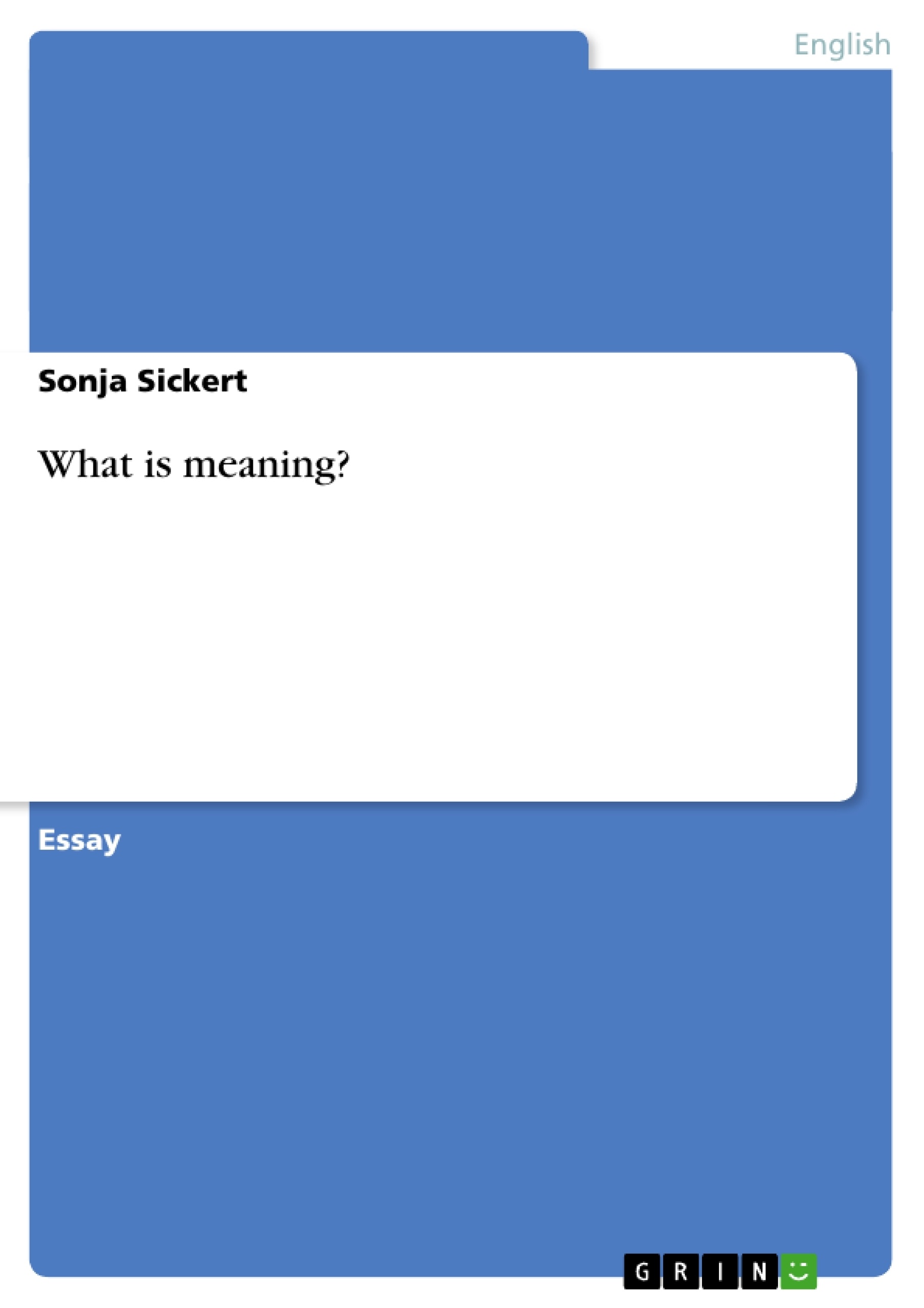In order to deal with the question I would like to support Kess who wrote that it is rather an “enormous question” with which philosophers have dealt with reaching back to the ancient Greek philosopher Aristotle (1992: 196). For the purpose of our undergraduate studies in semantics I found out that it could be necessary to specify the question with regard to linguistics. Therefore the subheading to this assignment could be: the different linguistic approaches to account for meaning in language. As elaborated by Cruse the study of meaning is relevant to many different academic disciplines such as philosophy, psychology, neurology, semiotics and linguistics (2004: 10). In terms of semantics, which are the study of meaning in human language -and therefore a division of linguistics and language studies- meaning plays a rather vital role.
In order to examine the question of meaning linguists have developed several different approaches and have divided the question in sub questions. The different approaches result from different analysises how meaning could be determined in terms of word meaning, sentence meaning and utterance meaning.
A matter that influences these questions is how we conceive the world. In order to answer that question it seems to be necessary to analyse the underlying devices of how meaning or information is stored and represented in the mental brain.
Table of Contents
- How is meaning represented or stored in the human brain?
- Approaches to analyse and define the meaning of words.
- Approaches to analyse the meaning and properties of sentences.
Objectives and Key Themes
The essay aims to explore the concept of meaning in language, focusing on how it is represented in the human brain and how it is analyzed and defined in terms of words and sentences. The essay delves into various linguistic approaches to understand the meaning of words, sentences, and utterances.
- Representation of meaning in the human brain
- Analysis of word meaning
- Analysis of sentence meaning
- Linguistic approaches to meaning
- Truth-values and truth conditions in sentence meaning
Chapter Summaries
- This chapter introduces the concept of meaning in language and discusses the difficulties in defining it. It explores the role of meaning in various disciplines, particularly in linguistics. The chapter also introduces the different approaches linguists have taken to analyze meaning, considering the mental representation of meaning and the different levels of analysis for word and sentence meaning.
- This chapter focuses on the question of how meaning is represented and stored in the human brain. It discusses the conceptual approach, which suggests that meaning is stored in concepts, and the notion of meaning being represented as images in the brain. The chapter acknowledges that these are just some of the possible approaches to understanding mental representation of meaning.
- This chapter delves into the analysis of word meaning. It examines the dynamic nature of word meaning, acknowledging that words can have multiple meanings and are interconnected with other words and concepts. The chapter discusses the concepts of synonymy, antonymy, denotation, and connotation as tools for analyzing meaning relations between words. It also emphasizes the influence of context and the interplay of words within a semantic field.
- This chapter focuses on the analysis of sentence meaning. It explores the distinction between sentence meaning and word meaning, highlighting the concept of truth-values and truth conditions as important aspects of sentence analysis. The chapter discusses the role of syntax in providing basic information about the meaning of words within a sentence, a concept referred to as compositional word semantic. Finally, it introduces different levels of meaning, including sentence meaning, statement meaning, and utterance meaning, highlighting the importance of context and the figurative use of language.
Keywords
The key terms and topics covered in this essay include meaning, representation of meaning, conceptual approach, word meaning, sentence meaning, utterance meaning, synonymy, antonymy, denotation, connotation, semantic field, truth-values, truth conditions, compositional word semantic, and the Principle of Compositionality.
- Quote paper
- Sonja Sickert (Author), 2005, What is meaning?, Munich, GRIN Verlag, https://www.grin.com/document/62736




